Related Research Articles

The British Army is the principal land warfare force of the United Kingdom, a part of the British Armed Forces along with the Royal Navy and the Royal Air Force. As of 1 October 2023, the British Army comprises 75,983 regular full-time personnel, 4,097 Gurkhas, 26,546 volunteer reserve personnel and 4,548 "other personnel", for a total of 111,174.

The British Armed Forces are the military forces responsible for the defence of the United Kingdom, its Overseas Territories and the Crown Dependencies. They also promote the UK's wider interests, support international peacekeeping efforts and provide humanitarian aid.

The Army Reserve is the active-duty volunteer reserve force of the British Army. It is separate from the Regular Reserve whose members are ex-Regular personnel who retain a statutory liability for service. The Army Reserve was known as the Territorial Force from 1908 to 1921, the Territorial Army (TA) from 1921 to 1967, the Territorial and Army Volunteer Reserve (TAVR) from 1967 to 1979, and again the Territorial Army (TA) from 1979 to 2014.

The Home Guard was an armed citizen militia supporting the British Army during the Second World War. Operational from 1940 to 1944, the Home Guard had 1.5 million local volunteers otherwise ineligible for military service, such as those who were too young or too old to join the regular armed services and those in reserved occupations. Excluding those already in the armed services, the civilian police or civil defence, approximately one in five men were volunteers. Their role was to act as a secondary defence force in case of invasion by the forces of Nazi Germany.
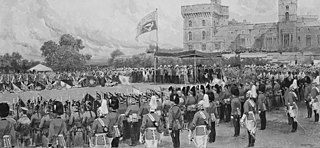
The Territorial Force was a part-time volunteer component of the British Army, created in 1908 to augment British land forces without resorting to conscription. The new organisation consolidated the 19th-century Volunteer Force and yeomanry into a unified auxiliary, commanded by the War Office and administered by local county territorial associations. The Territorial Force was designed to reinforce the regular army in expeditionary operations abroad, but because of political opposition it was assigned to home defence. Members were liable for service anywhere in the UK and could not be compelled to serve overseas. In the first two months of the First World War, territorials volunteered for foreign service in significant numbers, allowing territorial units to be deployed abroad. They saw their first action on the Western Front during the initial German offensive of 1914, and the force filled the gap between the near destruction of the regular army that year and the arrival of the New Army in 1915. Territorial units were deployed to Gallipoli in 1915 and, following the failure of that campaign, provided the bulk of the British contribution to allied forces in the Sinai and Palestine Campaign. By the war's end, the Territorial Force had fielded twenty-three infantry divisions and two mounted divisions on foreign soil. It was demobilised after the war and reconstituted in 1921 as the Territorial Army.
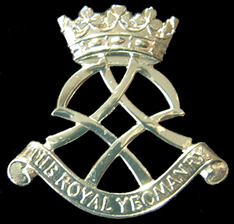
The Royal Yeomanry (RY) is the senior reserve cavalry regiment of the British Army. Equipped with Supacat Jackal variants, their role is to conduct mounted and dismounted formation reconnaissance. The Regimental Headquarters is located in Leicester, with squadrons in Fulham, Nottingham, Dudley, Croydon, Telford, and Leicester. The regiment is part of the Royal Armoured Corps and is only reserve cavalry regiment to resubordinate into regular brigade as part of the Future Soldier Programme, which in turn arose from the Integrated Review of Security, Defence, Development and Foreign Policy published in March 2021.

The 48th Division was an infantry division of the British Army. Part of the Territorial Force (TF) and raised in 1908, the division was originally called the South Midland Division, and was redesignated as the 48th Division in 1915. During the First World War, the division saw service on the Western Front before being transferred to the Italian Front in November 1917 and remaining there for the rest of the war.
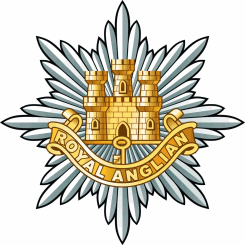
The Royal Anglian Regiment is an infantry regiment of the British Army. It consists of two Regular battalions and one Reserve battalion. The modern regiment was formed in 1964, making it the oldest of the Line Regiments now operating in the British Army, and can trace its history back to 1685. The regiment was the first of the large infantry regiments and is one of the three regiments of the Queen's Division.
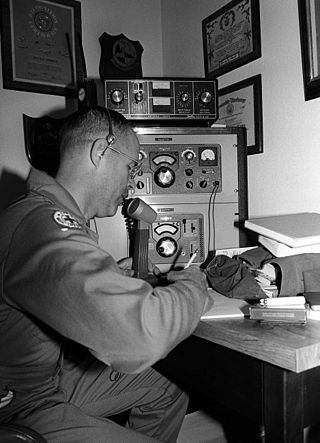
Auxiliaries are support personnel that assist the military or police but are organised differently from regular forces. Auxiliary may be military volunteers undertaking support functions or performing certain duties such as garrison troops, usually on a part-time basis. Unlike a military reserve force, an auxiliary force does not necessarily have the same degree of training or ranking structure as regular soldiers, and it may or may not be integrated into a fighting force. Some auxiliaries, however, are militias composed of former active duty military personnel and actually have better training and combat experience than their regular counterparts.
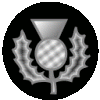
The 9th (Highland) Infantry Division was an infantry division of the British Army, formed just prior to the start of the Second World War. In March 1939, after the re-emergence of Germany as a significant military power and its occupation of Czechoslovakia, the British Army increased the number of divisions in the Territorial Army (TA) by duplicating existing units. The 9th (Highland) was formed in August 1939, as a second-line duplicate of the 51st (Highland) Infantry Division. The division's battalions were all raised in the Scottish Highlands.
The Royal Defence Corps was a corps of the British Army formed in 1916 and disbanded in 1936.

The Territorial and Reserve Forces Act 1907 was an Act of the Parliament of the United Kingdom that reformed the auxiliary forces of the British Army by transferring existing Volunteer and Yeomanry units into a new Territorial Force (TF); and disbanding the Militia to form a new Special Reserve of the Regular Army. This reorganisation formed a major part of the Haldane Reforms, named after the creator of the Act, Richard Haldane.

The Volunteer Force was a citizen army of part-time rifle, artillery and engineer corps, created as a popular movement throughout the British Empire in 1859. Originally highly autonomous, the units of volunteers became increasingly integrated with the British Army after the Childers Reforms in 1881, before forming part of the Territorial Force in 1908. Most of the regiments of the present Army Reserves Infantry, Artillery, Engineers and Signals units are directly descended from Volunteer Force units.

The British Militia was the principal military reserve force of the United Kingdom of Great Britain and Ireland. Militia units were repeatedly raised in Great Britain during the Victorian and Edwardian eras for internal security duties and to defend against external invasions. The British Militia was transformed into the Special Reserve under the Territorial and Reserve Forces Act 1907, which integrated all militia formations into the British Army.

The Haldane Reforms were a series of far-ranging reforms of the British Army made from 1906 to 1912, and named after the Secretary of State for War, Richard Burdon Haldane. They were the first major reforms since the "Childers Reforms" of the early 1880s, and were made in the light of lessons newly learned in the Second Boer War.
The 135th Infantry Brigade was an infantry brigade of the Territorial Force, part of the British Army. It was formed in the First World War as a duplicate of the South Western Brigade and was originally formed as the 2nd/1st South Western Brigade in 1914–1915 before later being renamed as the 135th Brigade. It was sent overseas to India in December 1914 to relieve Regular Army units for service in France. The brigade remained there for the rest of the war, supplying drafts of replacements to the British units fighting in the Middle East and later complete battalions.
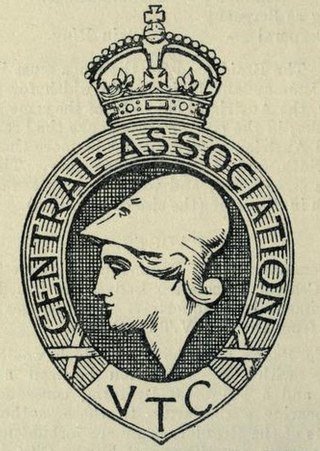
The Volunteer Training Corps was a voluntary home defence reserve force in the United Kingdom during World War I.
The Home Service Battalions were a force of the British Army in both the First and Second World Wars, intended for home defence and other duties. Those who joined these battalions were exempted from service outside of the United Kingdom.
The National Reserve was created in 1910 as a means of retaining the option to call on the services of ex-military personnel to augment the regular and auxiliary military forces of the United Kingdom in the event of a major war. At its inception it was little more than a register of men with previous military experience who would be willing to return to arms should their services be required. The government refused to grant the reserve any funding, and until three weeks after the start of the First World War, could not definitively say how it would be used. On the outbreak of the war, many of the younger, fitter reservists re-enlisted in the British Army or Territorial Force on their own initiative, without waiting to be called up. When the reserve was finally called to duty, it was used to augment the home defence forces in the guarding of key installations and infrastructure. The older reservists, considered unfit for more active duties, played a leading role in the creation of the Volunteer Training Corps, a civilian auxiliary recruited from those ineligible for military service, largely on account of age. The introduction of conscription early in 1916 resulted in the younger reservists being called up for service in the army. The remaining reservists were transferred into the Royal Defence Corps, established in March 1916 as part of the re-organisation of the home defence forces, and the National Reserve effectively ceased to exist as a distinct organisation.
The British home army in the First World War served the dual purpose of defending the country against invasion and training reinforcements for the army overseas. Initial responsibility for defending the nation lay with the Territorial Force, a part-time auxiliary designed in 1908 as a means of expanding the army in a major foreign conflict but, as a result of political compromise, implemented as a home defence army. It was supported in this role by 42,000 regular army troops, primarily belonging to the Royal Garrison Artillery and the Royal Engineers. The 14 infantry divisions and 14 mounted brigades of the Territorial Force were mainly allocated either to the Local Force, stationed near the coast and tasked with disrupting an invasion at the point of landing, or the Central Force, a mobile element tasked with defeating the invading force as it marched on London. The Local Force was augmented by units of the Special Reserve and Extra Reserve, which were the third battalions of the regular army line infantry regiments established to recruit and train replacements for their regiments' two combat battalions. The home army was also largely responsible for guarding vulnerable points, such as the communications infrastructure, rail network and munitions works.
References
- ↑ Hansard - House of Commons Debate 21 July 1936 vol 315 cc228-9: TERRITORIAL FORCE (NATIONAL DEFENCE COMPANIES).
- ↑ Perry, Frederick W., 1988, The Commonwealth Armies: Manpower and Organisation in Two World Wars Manchester University Press ISBN 0-7190-2595-8 (p. 50)
- ↑ Hansard - House of Commons Debate 26 September 1939 vol 351 c1183: NATIONAL DEFENCE COMPANIES
- ↑ Hansard - House of Commons Debate 3 October 1939 vol 351 c1804: NATIONAL DEFENCE COMPANIES
- ↑ Perry, p. 53